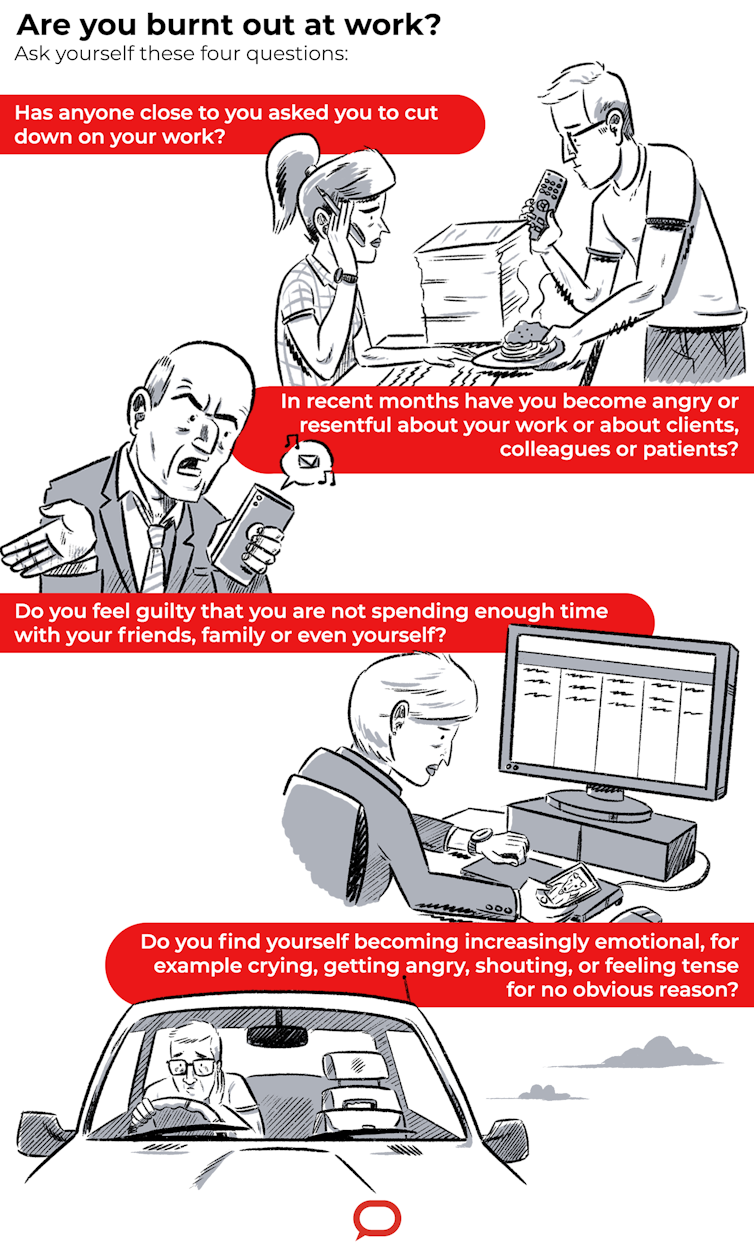
Bernat Armangue/AP
Cecilia Anthony Das, Edith Cowan University and Kenneth Yin, Edith Cowan University
As Australia prepares to roll out a national vaccination program – aiming for a 95% uptake rate – big questions remain for employers and employees.
Employers have a clear incentive to want employees vaccinated, to protect clients and co-workers as well as to avoid legal liabilities of potential workplace COVID transmissions.
But can an employer insist on vaccination as a condition of employment?
That’s an ambiguous legal question, as indicated by two recent unfair dismissal cases taken to the federal Fair Work Commission. Both involve employers in 2020 making an influenza vaccination a requirement, and employees losing their jobs for refusing.
The bottom line from both cases is that an employer can make vaccination a condition of working – but with significant caveats. It depends on “balancing” the employer’s duty of care to others with the employee’s reason for refusal, and the circumstances of the work they do.
Employers have a duty of care
The first relevant case is the Fair Work Commission’s ruling in November 2020 on an unfair dismissal claim by child-care worker Nicole Arnold against Goodstart Early Learning, Australia’s largest early learning provider.
In April 2020 Goodstart made a flu vaccination a condition of employment, though allowing exceptions on medical grounds. Arnold objected. In correspondence with her employer she cited the Bible, the Nuremberg Principles and the Universal Declaration of Human Rights. But she gave no medical reasons. She was dismissed in August 2020.
The commission dismissed Arnold’s application to have her case heard on the basis Goodstart’s vaccination policy was arguably reasonable to satisfy its duty of care to children, while Arnold’s refusal was arguably unreasonable.
Commissioner Ingrid Asbury ruled:
While I do not go so far as to say that [Arnold’s] case lacks merit, it is my view that it is at least equally arguable that [Goodstart’s] policy requiring mandatory vaccination is lawful and reasonable in the context of its operations which principally involve the care of children, including children who are too young to be vaccinated or unable to be vaccinated for a valid health reason.
It was, Asbury said, a matter of balancing an employer’s duty of care with the needs of employees who may have reasonable grounds to refuse to be vaccinated. She saw no exceptional circumstances to rule Arnold was unfairly dismissed.
Read more:
How do we counter COVID misinformation? Challenge it directly with the facts
Work circumstances count
The second case involves an unfair dismissal claim by care assistant Maria Glover against Queensland aged and disability care provider Ozcare, for whom she had worked since 2009.
Ozcare provides free flu vaccinations to employees annually. Glover, 64, had previously declined to get the shot due to allergies and her understanding she had an adverse reaction to a flu shot as a child.
In April 2020, Ozcare introduced a policy making influenza vaccinations mandatory for all employees in its residential aged care facilities or having direct client contact in its community care services. Its reason was the risk to clients who caught the flu and then contracted COVID-19.
It required supporting evidence for a medical exemption. Glover did not do so. This resulted in Ozcare no longer rostering her for work from May. She filed her unfair dismissal claim in October.

Shutterstock
A final ruling by the Fair Work Commission is still pending. The case was complicated by Ozcare’s lawyers arguing Glover had not been dismissed. But a preliminary decision on January 18 – in which Commissioner Jennifer Hunt ruled Glover had been dismissed – included observations relevant to the merits of future cases involving vaccination refusals.
Read more:
Oxford scientists: how we developed our COVID-19 vaccine in record time
Hunt considered a future scenario (in November 2021) when employers of men playing Santa Claus in shopping centres may be required to have a flu vaccination “and if a vaccination for COVID-19 is available, that too”. In such a situation, where social distancing is impossible, a vaccination might become an “inherent requirement” of the job. In the court of public opinion, Hunt said, this might not be considered unreasonable. But a court or tribunal would need to consider the context.
In particular, Commissioner Hunt noted:
In my view, each circumstance of the person’s role is important to consider, and the workplace in which they work in determining whether an employer’s decision to make a vaccination an inherent requirement of the role is a lawful and reasonable direction. Refusal of such may result in termination of employment, regardless of the employee’s reason, whether medical, or based on religious grounds, or simply the person being a conscientious objector.
What this all means
What these two rulings boil down to is that an employer can make a vaccination an inherent requirement of employment, and dismiss a worker for refusing – even if they have a legitimate reason. But it depends on the role and exposure risks.
But if risks to others can be minimised through social distancing and other measures – say, for instance an employee works from home – dismissing an employee for refusing to get vaccinated could be ruled unfair. Particularly if they have a good reason – that is a medical condition, not a pseudo-legal objection. It depends on the balance of the employer’s duty of care to others against the employee’s claims.
So it’s not clear-cut. As things stands it is risky for employers to adopt a blanket policy to make COVID-19 vaccinations compulsory.
Read more:
The Oxford vaccine has unique advantages, as does Pfizer’s. Using both is Australia’s best strategy
Bringing greater clarity
Employer groups would like a more straightforward legal landscape. As the head of the Council of Small Business Organisations Australia, Peter Strong, has noted:
There is the issue of vaccinated employees refusing to work with non-vaccinated employees. Where does the employer stand, legally and practicably, in that situation? Where does the employee stand?
In the US the Equal Employment Opportunity Commission (which enforces federal laws against workplace discrimination) has ruled employers can require all employees – with some religious or disability-related exemptions – to get vaccinated to enter a workplace.
Australia’s federal industrial relations minister Christian Porter has reportedly told employers the government will not mandate vaccines in workplaces.
That means making the legality of workplace vaccination policies more “black-and-white” will need to come from the state and territory governments, using their regulatory powers under their work health and safety acts.![]()
Cecilia Anthony Das, Lecturer, Edith Cowan University and Kenneth Yin, Lecturer in law, Edith Cowan University
This article is republished from The Conversation under a Creative Commons license. Read the original article.









You must be logged in to post a comment.